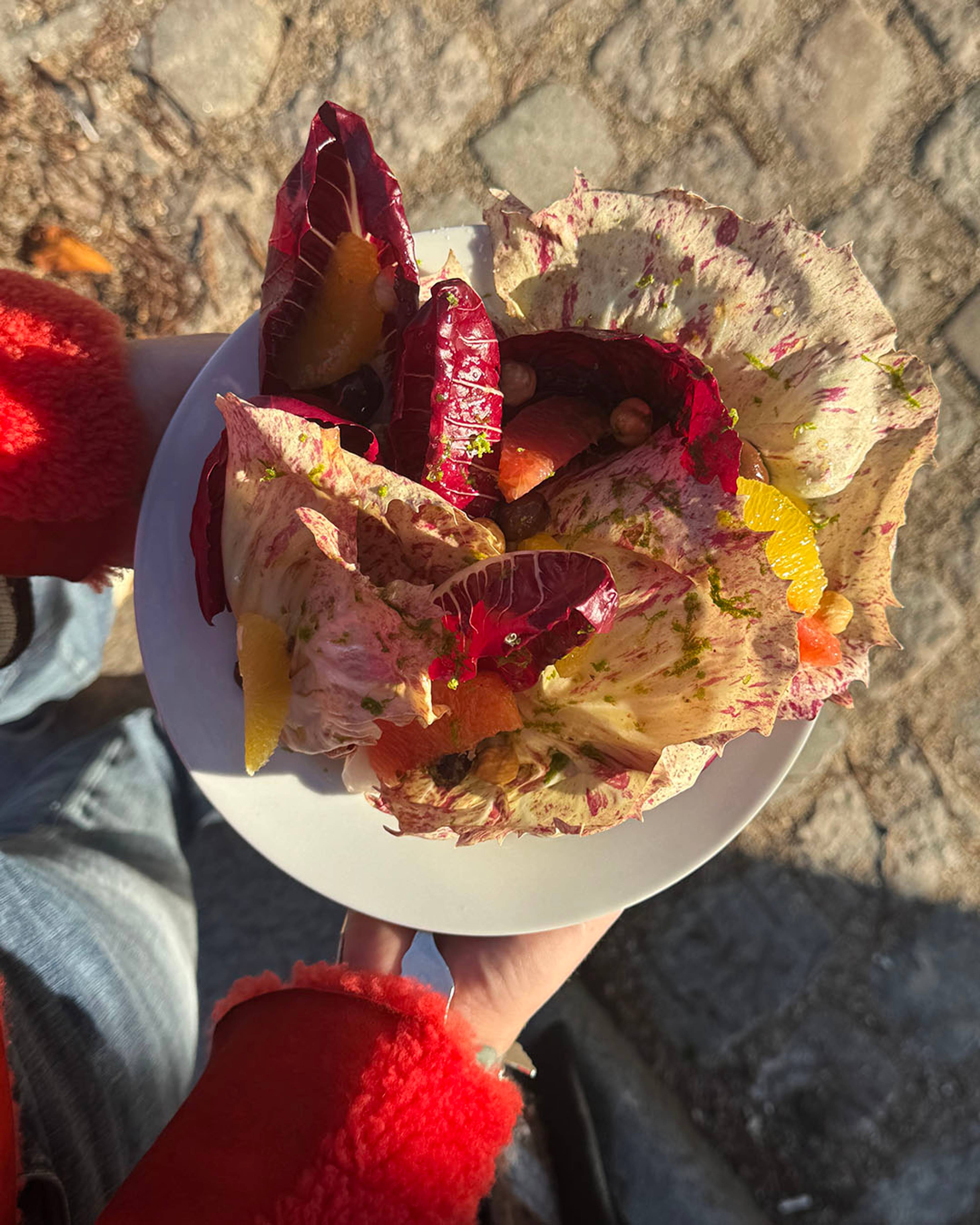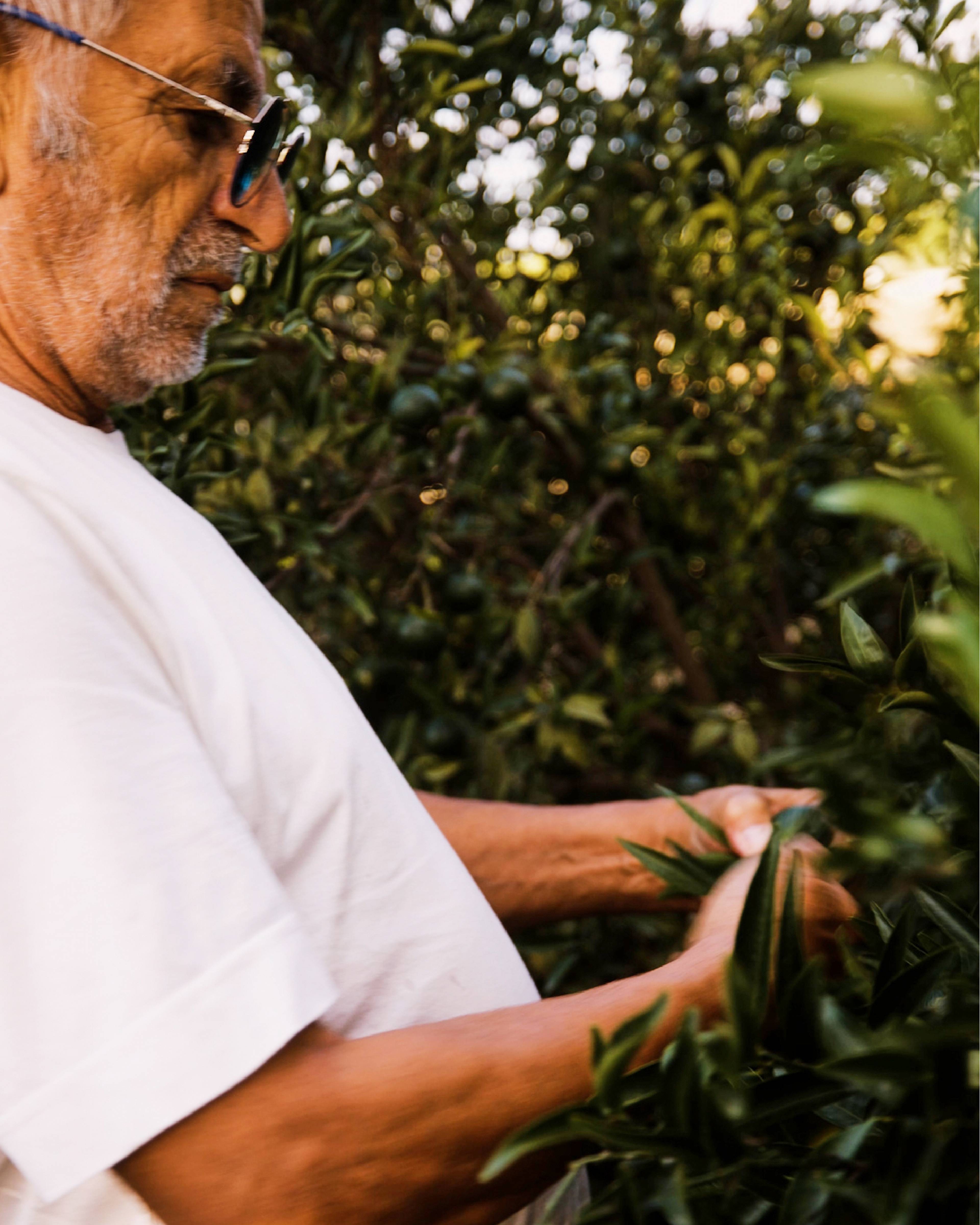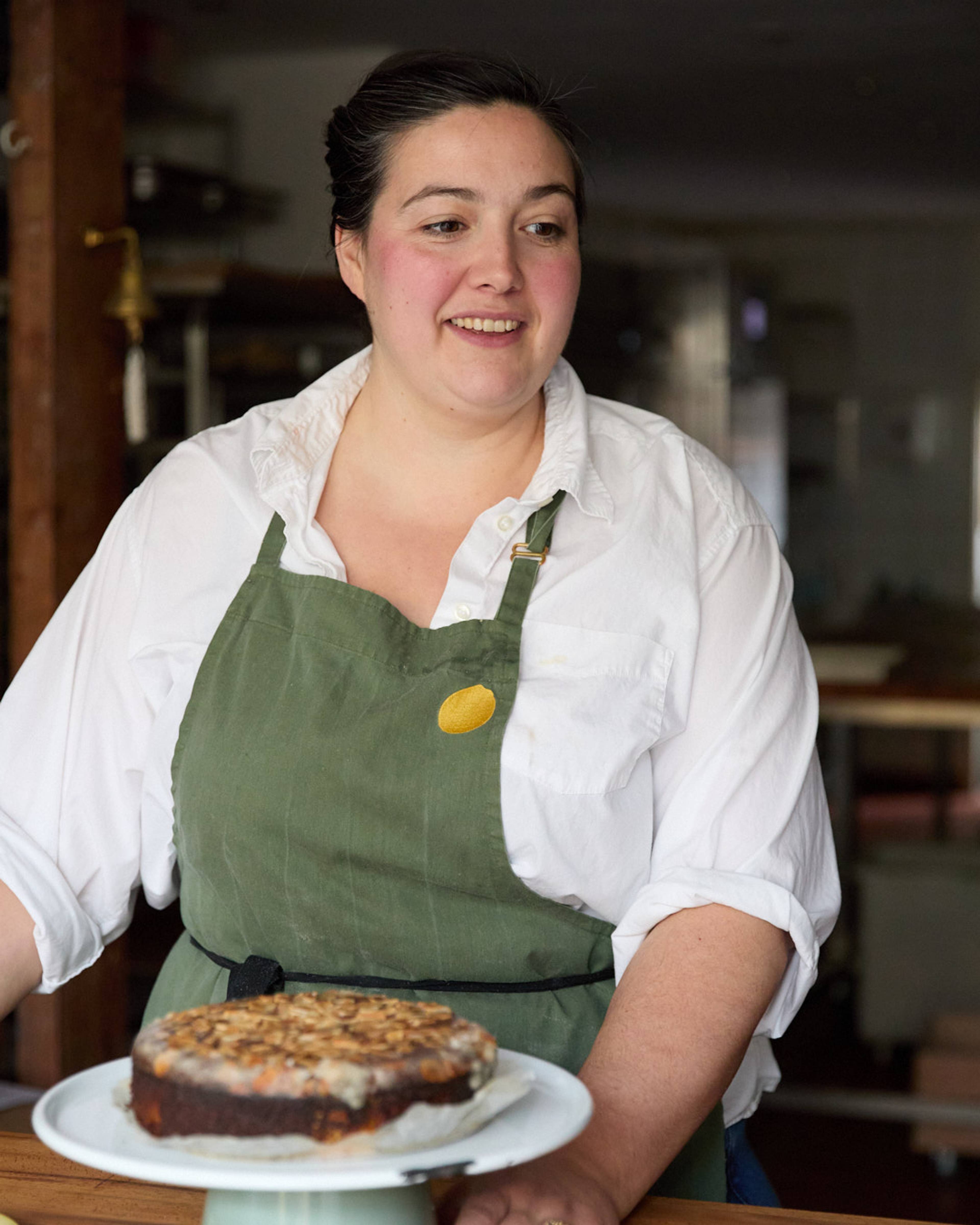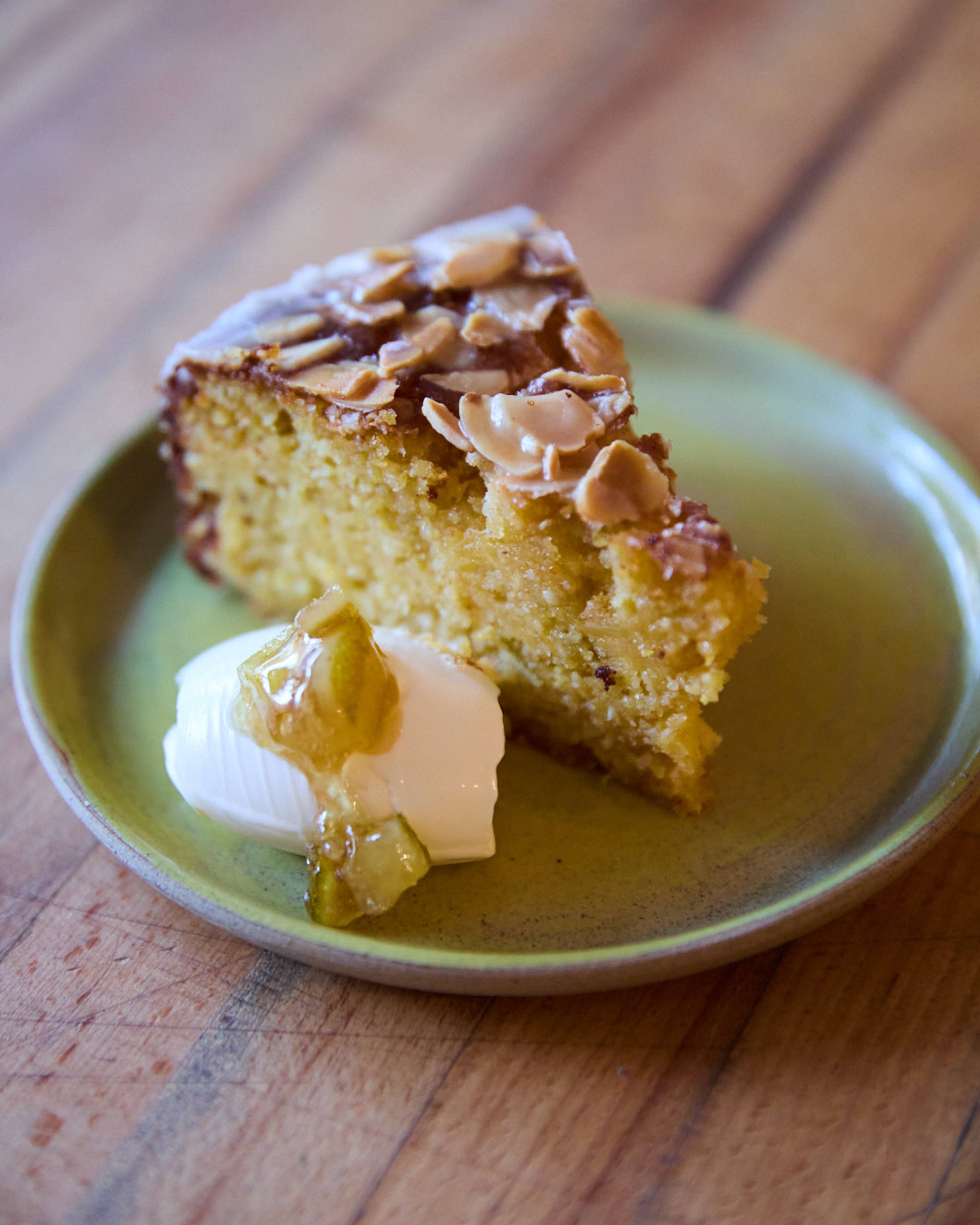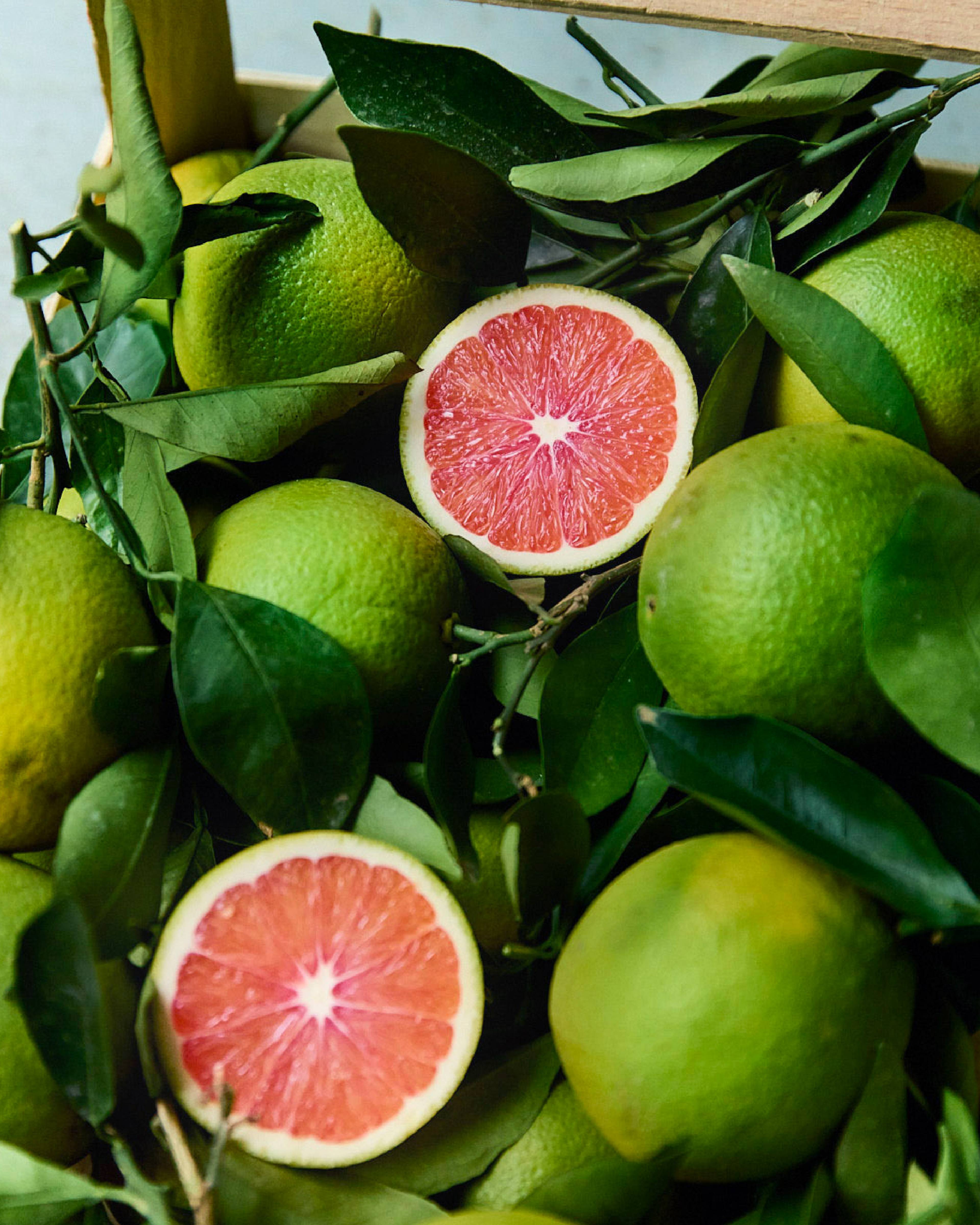WILD MOREL AND CHICKEN POTSTICKERS WITH AMY POON
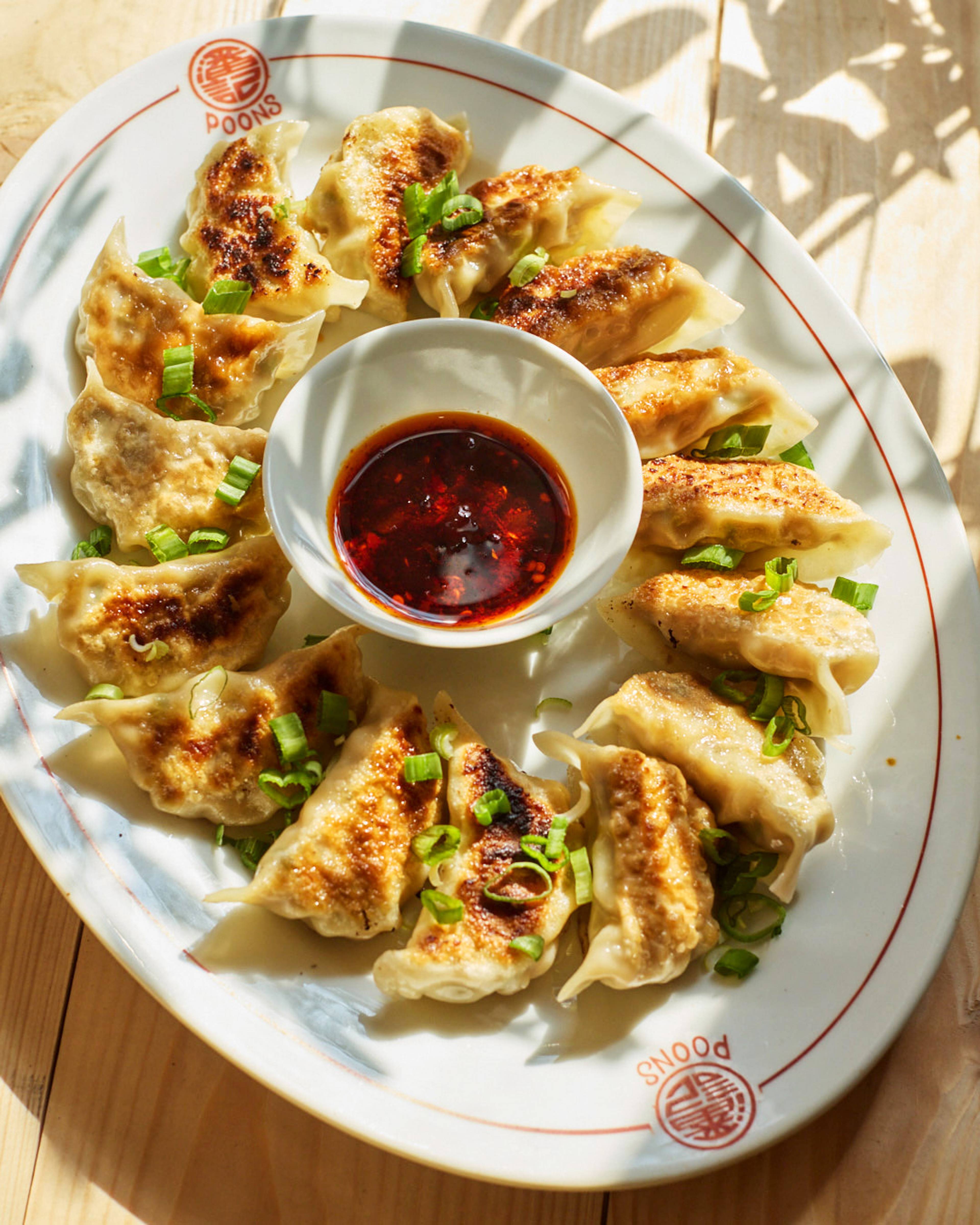
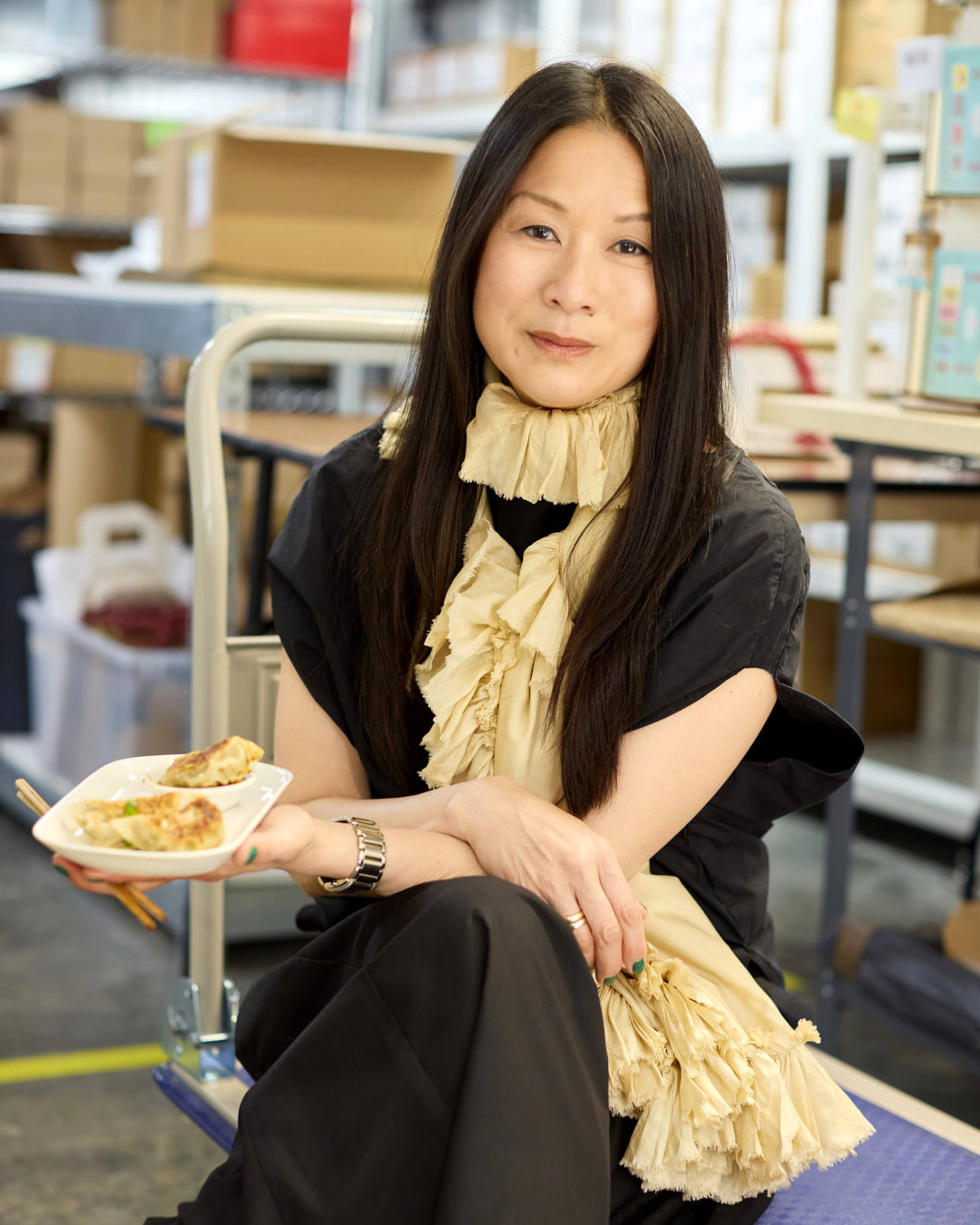
Food can comfort, intrigue and inspire. It can nourish. Tell stories. Food also has the possibility to be a vessel for memories – of place, setting and people. For Amy, founder of Poon’s London, food is more than just sustenance. It’s a living connection to her family heritage and an essential part of her present.
Amy’s father, Bill Poon, changed the culinary landscape of London when he opened his restaurant in Covent Garden in 1976 and became the world’s first Chinese chef to be awarded a Michelin star. Everyone from Mick Jagger to Barbra Streisand walked through the doors of the former vegetable warehouse on King Street.
Her family’s legacy runs deeper again, as she comes from a lineage of chefs stretching back generations. Among her ancestors is a many-times-great-grandfather who served as a chef to an emperor, and another, who centuries ago, essentially pioneered the concept of the stock cube. It's stories like these that have formed the foundation of Amy’s culinary philosophy and the essence of what she brings to Poon’s London.
Located just next door to us in Bermondsey’s Spa Terminus, Poon’s is celebrated for its award-winning signature sauces, oils, soups, wind-dried meats and wontons. You can find the WO Sauce, Chilli Vinegar Dressing and Extraordinary Chilli Oil as part of our Poon’s Trio – available online, in store and on our app, where you'll also find Poon's Soy Sauce.
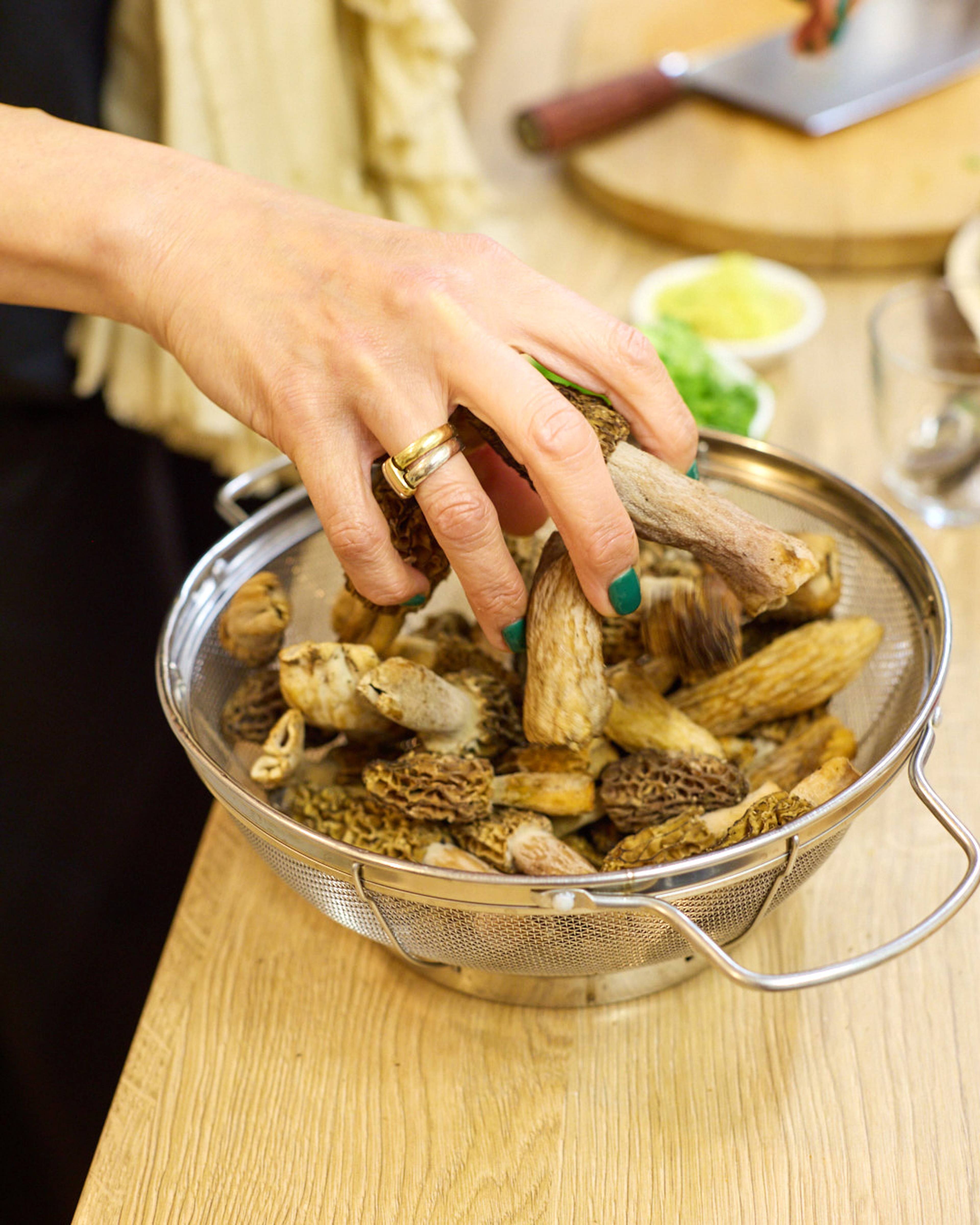
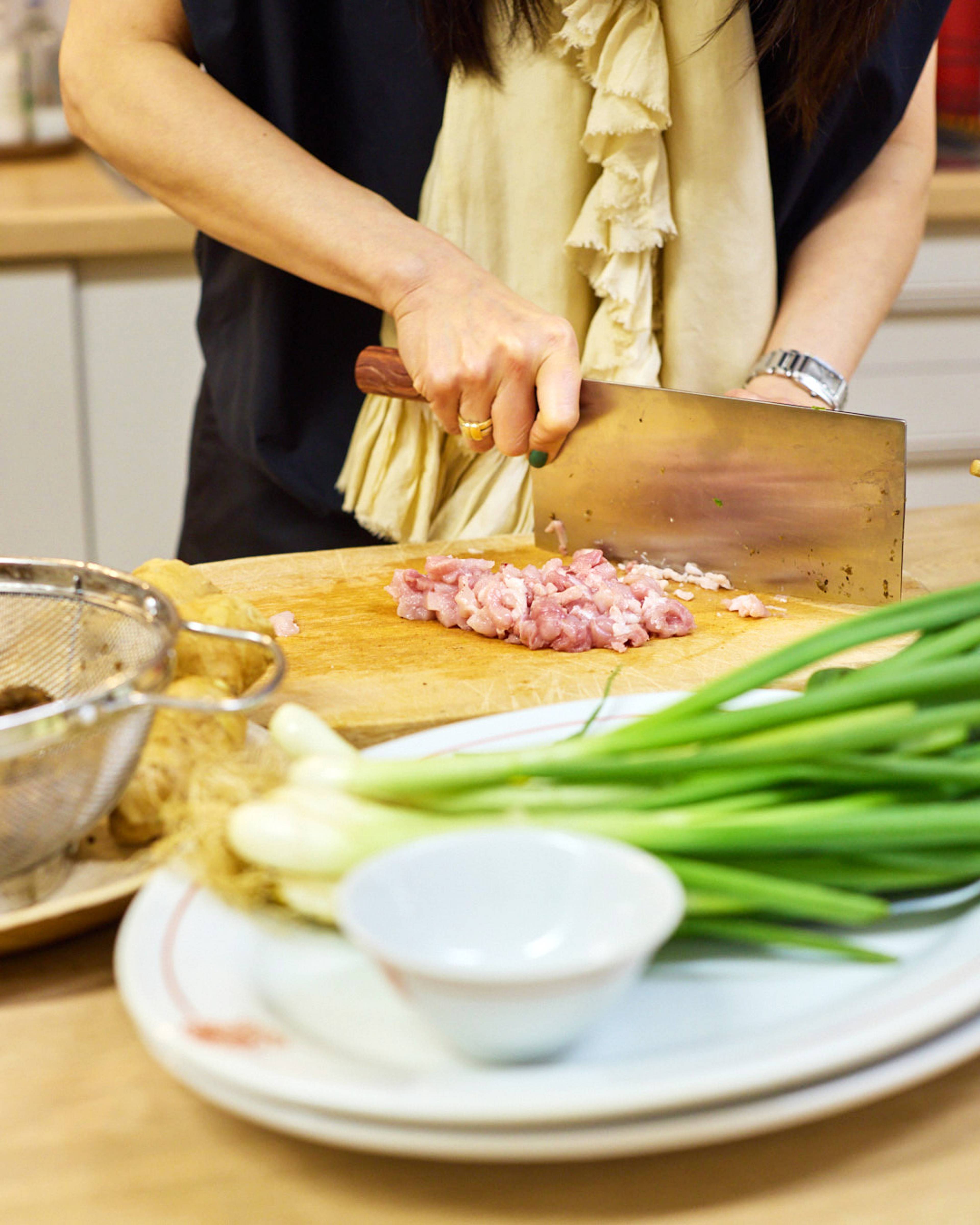
“Do you know what these are called in Chinese?” Amy asks, holding a handful of Wild Morels, foraged from Bulgaria’s woodlands. “They’re called Lamb Belly Mushrooms, because they quite literally look like the belly of a lamb”. She prepares to make us Wild Morel and chicken potstickers with Radar Spring Onions from Mora Farm in Cornwall.
“In Cantonese we call this a ‘wor-tip’ which means ‘stick to the pan’. If you like, you could call it a ‘potsticker’ because that's what it translates to," she explains.
She starts by dicing the chicken, then minces it with the back of her knife, as if playing the drums. Into the mixer goes ginger, soy sauce, potato starch and Shaoxing wine, salt and pepper. “Chinese cooking is all about balance,” Amy says, adding some sugar to the mix to help lift the flavours. As it combines, sesame oil is drizzled in, followed by the chopped Morels and Radar Spring Onions. Once mixed, she spoons teaspoons of filling onto the wrapper.
A dumpling is a piece of art; its creation and design left up to the maker. “There’s more than one way of folding and pleating a dumpling,” she notes. “Traditionally, you’d make them in a crescent shape and simply fold them over and press, fold over and press, fold them over and press – creating as many folds as you like.”
Amy fills and meticulously shapes each individual dumpling into plump, sickle moons, ready to be pan-fried.
A delight to observe, and of course, to eat.
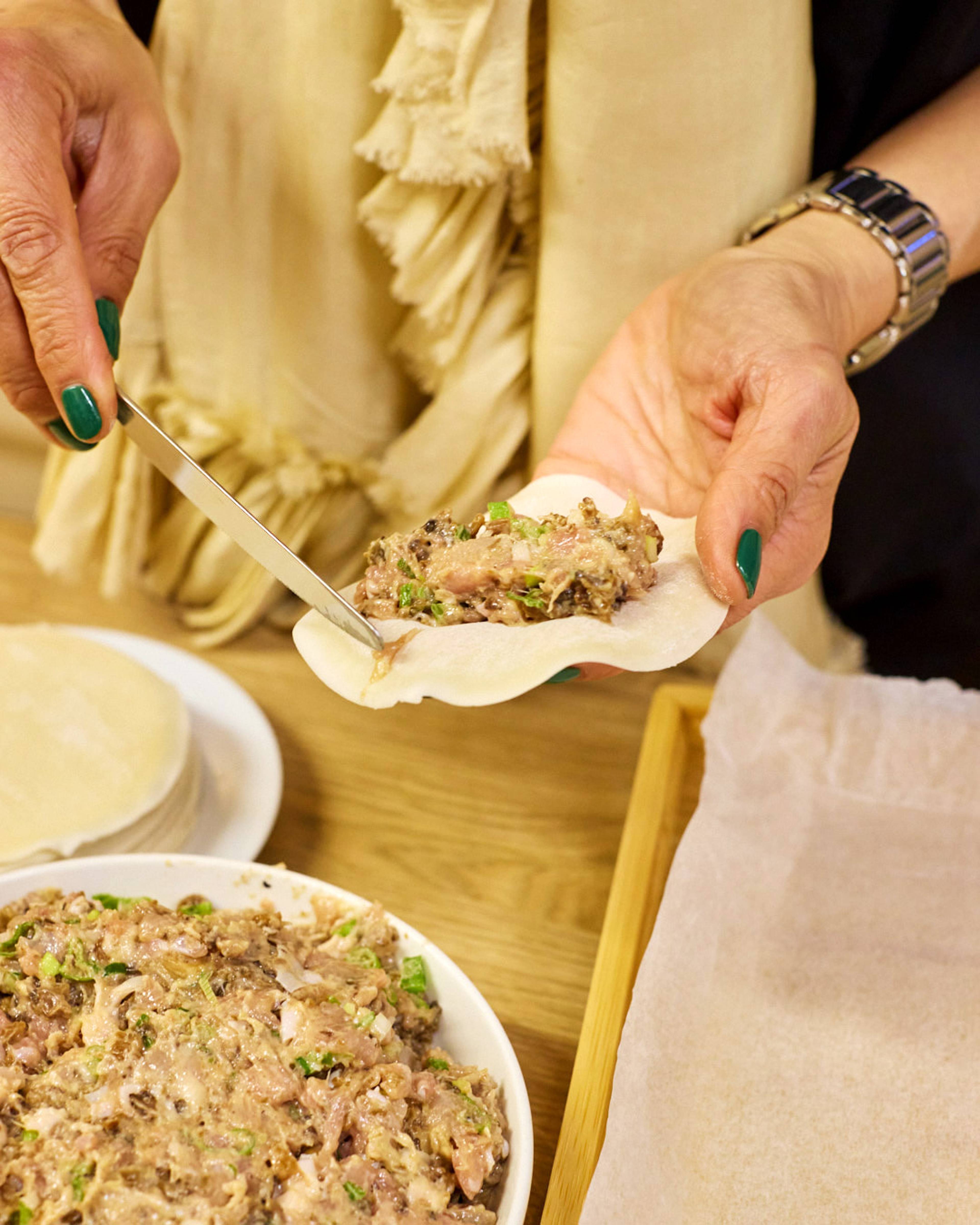
WILD MOREL AND CHICKEN POTSTICKERS
INGREDIENTS
500g Chicken thighs, hand-chopped
200g Morel Mushrooms, stems included, cleaned and roughly chopped
50g Radar Spring Onion, finely chopped
25g Ginger, minced or very finely chopped
25g Light soy sauce
20g Potato starch
20g Shaoxing wine
15g Sesame oil
1 tsp Sugar
1/2 tsp Salt
1/2 tsp White pepper
Store-bought potsticker wrappers
"If you want to make your own wrappers, work with a ratio of 53% water to all-purpose flour. Depending on how big your wrappers are and how generously you fill your potstickers, this amount of mix should easily make 40 - 50 potstickers. Hand-chopped chicken thighs are also so much better than ready-minced chicken so if you have time, I highly recommend it. Consider it a form of anger management!"
METHOD
- Dice your chicken then, using the back of your knife, hammer the chicken till you have a rough mince. You can use 2 knives, one in each hand and pretend you're playing the drums.
- Place the minced chicken in a stand mixer with a paddle attachment.
- Add ginger, light soy sauce, potato starch, Shaoxing wine, sugar, salt and pepper.
- Mix at a medium speed till all the ingredients are well combined - about 1 minute.
- Add in sesame oil and mix at high speed till the mixture becomes sticky and tacky - about 4-6 mins.
- Finally, add the chopped Morels and Radar Spring Onions and mix on a medium low speed to evenly incorporate the morels and spring onions into the meat mix.
- Turn the mixture out onto a plate.
- There are many ways to wrap a potsticker but the important thing is to seal the mixture inside the wrapper so that the juices are retained inside the dumpling when cooking.
- Place about a teaspoon of mixture in the centre of your wrapper, wet the edges of the wrapper with water and seal. You need less filling than you think, overstuffed potstickers are hard to seal.
- Add a small amount of neutral oil to a hot frying pan with a lid, arrange your potstickers in the pan so they do not touch each other.
- Fry gently on a medium low heat until the bottoms begin to take colour. Loosen the potstickers with a wooden spatula.
- Pour over enough boiling water to reach halfway up the potstickers and immediately cover with a tight-fitting lid.
- Allow the steam from the water to cook the potstickers for about 4-5 minutes.
- Remove the lid and continue to cook till any residual water has evaporated and the bottoms are toasty brown and crispy.
- Plate (or not – there’s something particularly satisfying about eating them from the pan, like eating ice-cream out of the tub) and serve with Poon's Chilli Vinegar Dressing for dipping.
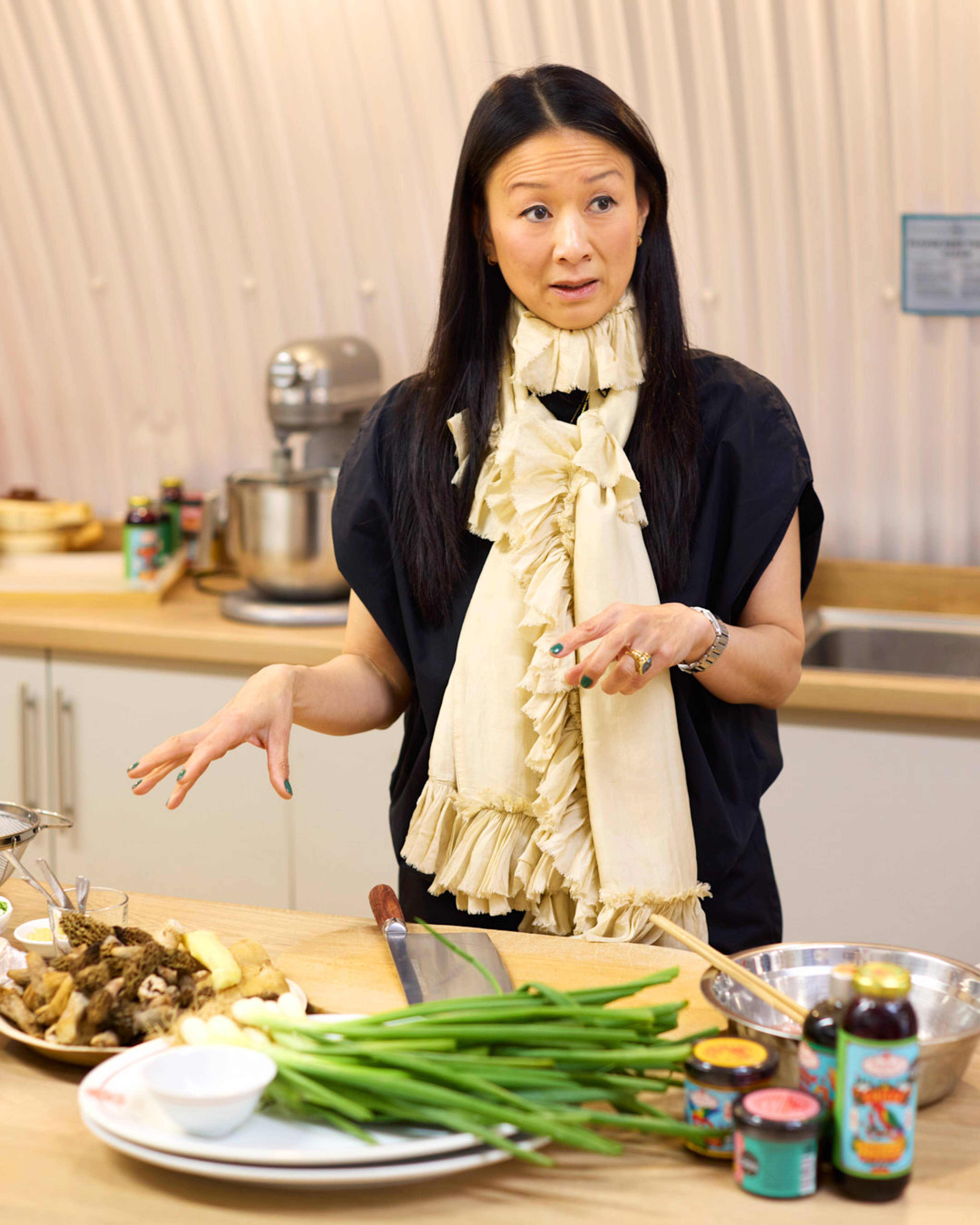
Tell us a little bit about this recipe – what inspired you to choose these ingredients?
Everybody seems to love dumplings, right? Apparently, there's something called National Dumpling Day. Growing up, potstickers were probably one of my favourite things to eat. My father is the potsticker king.
When it comes to the ingredients, Morels are in season at the moment and they have such a lovely earthy flavour. It’s fun to cook with Chinese flavours using something that people probably don’t associate with traditional Chinese cuisine.
Your family has a rich culinary history – we’d love to hear a little bit more about this!
My father comes from a long line of chefs. Apparently, my great, great, great, great grandfather was once a chef to an emperor.
There’s another wonderful story about my distant grandfather who, I suppose, invented the stock cube. He was a chef to a provincial governor, and they often travelled to the capital for exams. In Cantonese cooking, a superior stock is essential, but he couldn't bring vats of stock or live animals with him on the journey. So, he came up with a clever solution: he soaked linen towels in concentrated stock and dried them in the sun. He would carry these towels with him, and whenever he stopped, he'd simply rehydrate them in water to create a rich stock. Now, I’m on a bit of a mission. I would love to make Chinese stock inspired by this story!
My parents moved to London in the 60s and opened their first restaurant in 1973 on Lisle Street, which is where I was born. They had quite a following and ended up opening a restaurant in 1976 in Covent Garden in what was an old vegetable warehouse. Back then, Chinese food had a really bad reputation, so my father built a glass kitchen in the middle of the restaurant, so you could see the chefs cooking.
It didn't look like your average Chinese restaurant. There was no red or gold and it still had the old brick from the warehouse, with lots of funky modern art. Everyone from Mick Jagger to Barbra Streisand came to the restaurant, and all the Bonds, too.
In 1980, my father became the first Chinese chef to get a Michelin star.
How does this history inspire what you do today?
Growing up, I naturally spent a lot of time in my parents’ restaurants. It might seem glamorous, but the reality is that it's incredibly hard work with long hours.
I swore I’d never work in the restaurant industry, but in 2016, a friend turned to me and said, “Amy, you’re happiest when you’re eating, thinking about eating, cooking, or thinking about cooking. It’s time to do what you’re meant to do.” That was the turning point. I left my job, made a plan, and eventually launched a pop-up in Clerkenwell. This led to the opening of Wontoneria, just in time for Chinese New Year in February 2021. On our first weekend, we made an incredible five thousand wontons.
What are some of your fondest food-related traditions or memories?
I have this enduring love affair with Zabaglione. One day, when I was around 10 years old, I came home from school in north London and my mum was busy at the restaurant. My dad and I drove past an old neighbourhood Italian restaurant in Belsize Park. We stopped and went in for a late lunch, followed by some pudding. I asked the waiter for Zabaglione and he said “I'm terribly sorry, but the chef has just gone home”. My father asked the Maître d', “Do you have eggs, sugar and Marsala?”. He replied, “Yes”. Then my father simply rolled up his sleeves and started to make Zabaglione for me. There was a lineup of astonished waiters watching as my father made this traditional Italian dessert. Whenever I see it on a menu now, I always order it.
Is there anything you wish more people knew about Chinese cuisine?
That it’s really quite simple. I think people are often put off because it feels unfamiliar, but the basic elements of Chinese cooking are simple and actually, it doesn’t take a lot of ingredients.
When I travel, I take a little cooking kit with me. Inside the kit, I’ll have soy sauce, white pepper, Shaoxing wine, sesame oil and potato starch and maybe some kind of chilli product. With these, I can pretty much cook anything.
What’s your favourite vegetable or fruit to cook with and why?
Aubergines.
While in western culture, you’d often grill, roast or char them, we cook them in a completely different way. Chinese-style aubergines are cut into batons and steamed until they’re silky and falling apart. It’s like eating silk threads.
As for fruit, I love pomelos. To me, these are the greatest fruit, along with cherries and Chinese pears, too.
Do you have a go-to meal for sharing with loved ones?
One meal I often cook for friends is Hainan chicken rice or steamed fish.
Any pantry staples you can’t live without?
I’m definitely rice over noodles. It’s so versatile and you can do so much with it. Also soy sauce!
What do you suggest people try from the shop?
I’m really keen for people to try our Magic Soup. Many Cantonese children are brought up, being told, “drink your soup or you won’t grow, pass your exams, get a girlfriend/boyfriend, be clever, have good skin..” the list goes on. I explained this to a friend of mine and he responded, “So basically, it’s magic soup?” so, that’s what we called it.
The Chinese philosophy of eating is very much ‘food is medicine’, and there are certain things you can eat to keep your body in check. Making soup for someone is also a real love language.
Finally, if we could take you for a meal in any restaurant in the UK right now, where would you choose and why?
I love Clarke’s on Kensington Church Street. It’s just exemplary and it always feels like such a treat to go there. I also had the most extraordinary black pudding of my life at Where The Light Gets In – a restaurant located up north in Old Stockport Town.
Stories
Voir toutWe exist to fix the food system.
People are more cut off from the origins of their food than ever. This makes flavour, nutrition and farming practices that protect the planet, almost impossible to find.
By working directly with growers, we create a more sustainable way forward for farming. By giving everyone the tools to understand the power of our food choices, we empower everybody to become drivers of change.
Now is the time for action. Join the food system revolution.

Go beyond four seasons
Each fruit and vegetable has its own season, with subtle shifts which happen every day. Follow their microseasons to unlock flavour at every stage.
WHAT’S IN SEASON?

Know where your food comes from
We know the name of the people behind everything we source. Recognise their growing artistry to find out exactly where your food comes from (and why that matters).
MEET THE GROWERS

Make your diet diverse
Our growers work with varieties chosen for quality and nutrition, not yield. By selecting their crops you keep heritage seeds in play, add to ecosystem biodiversity and preserve unique flavours.
PEAK SEASON BOX
United Kingdom
© 2025 Natoora Ltd.
